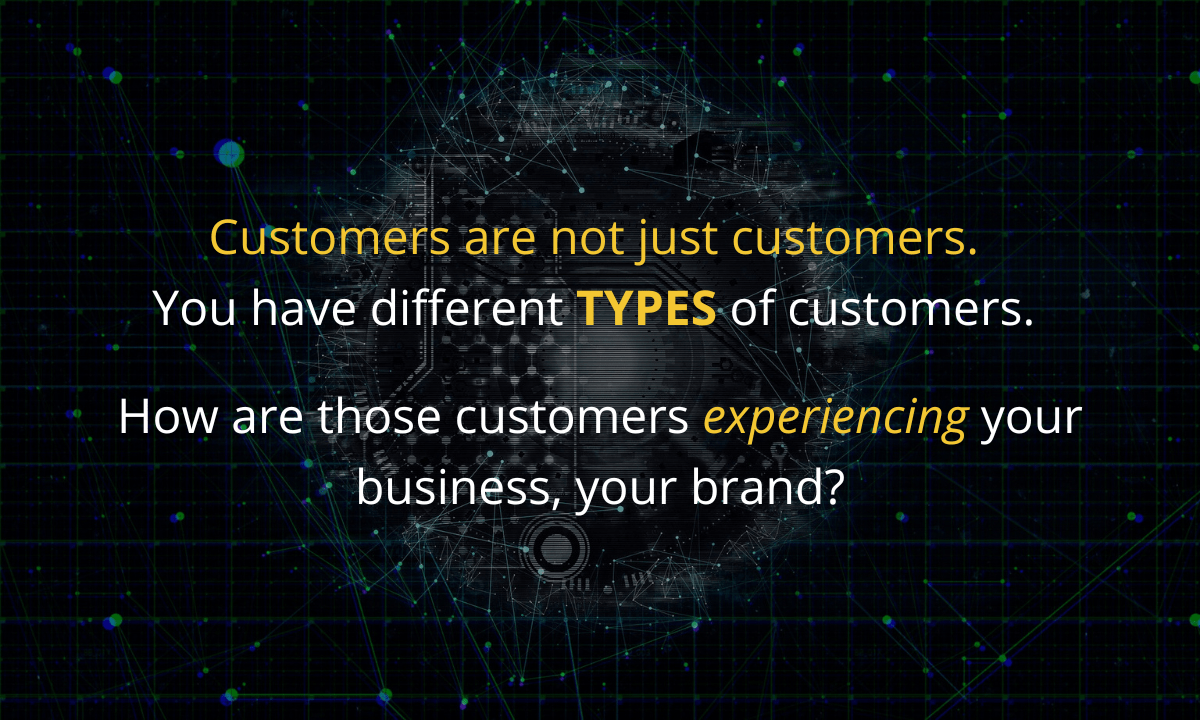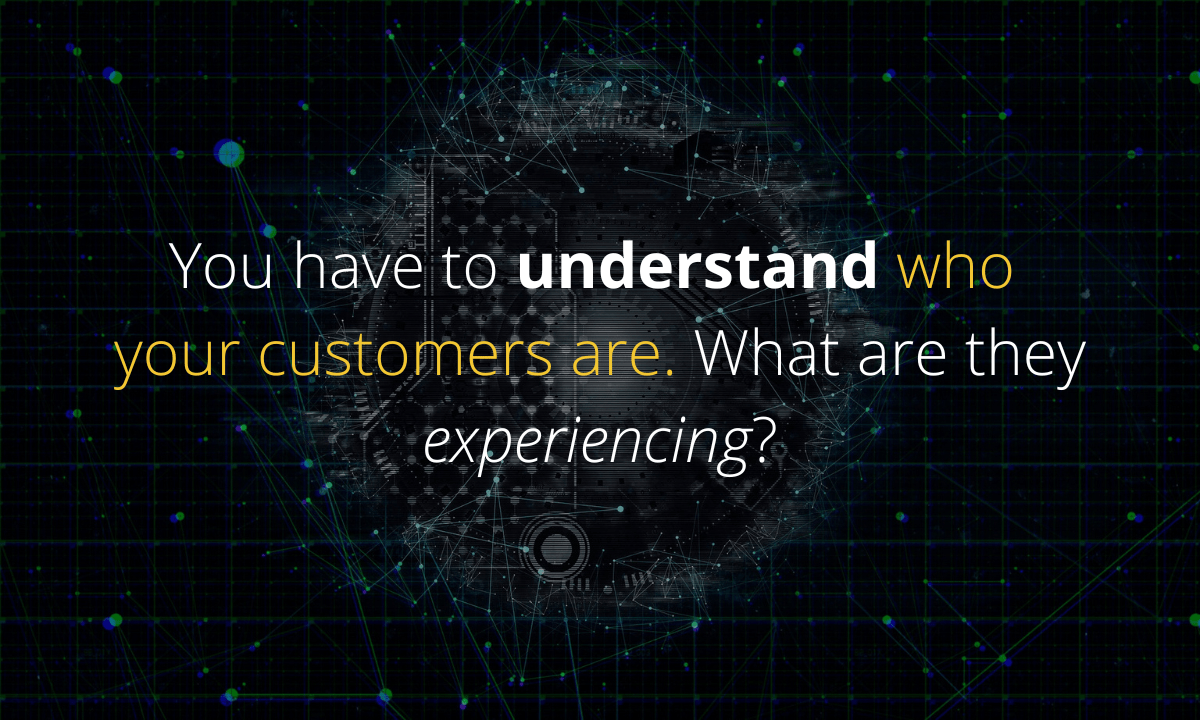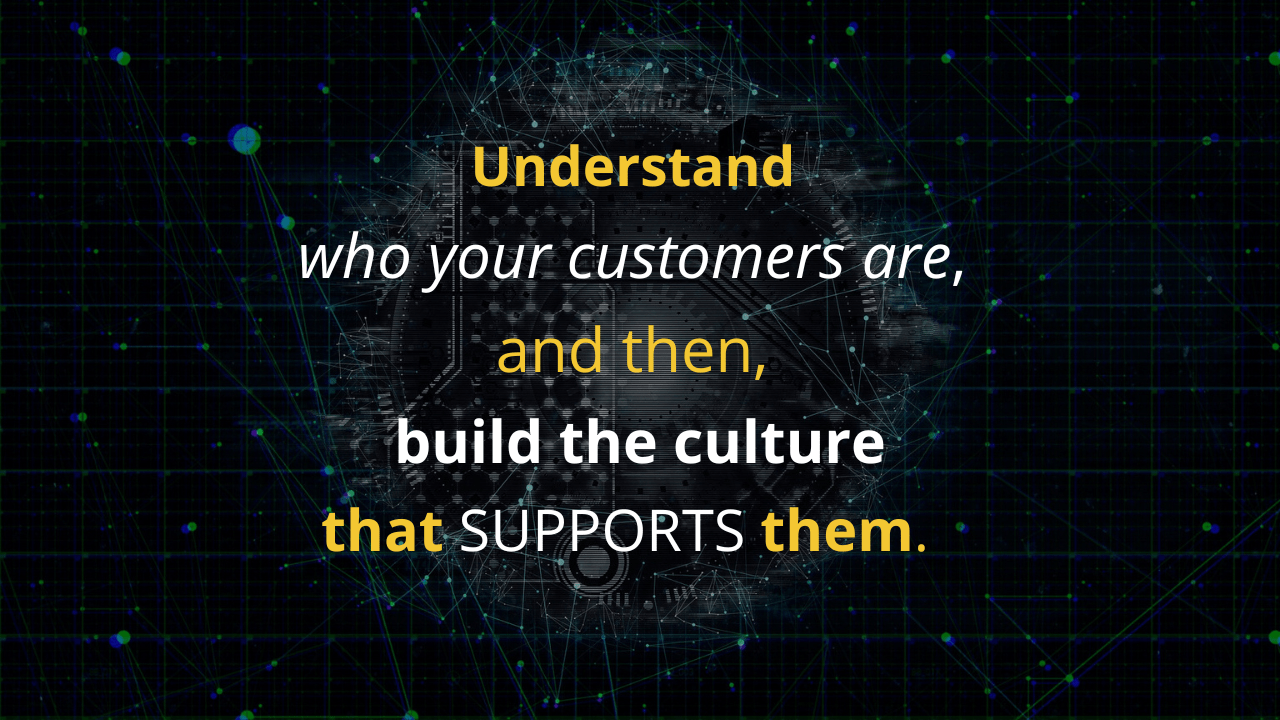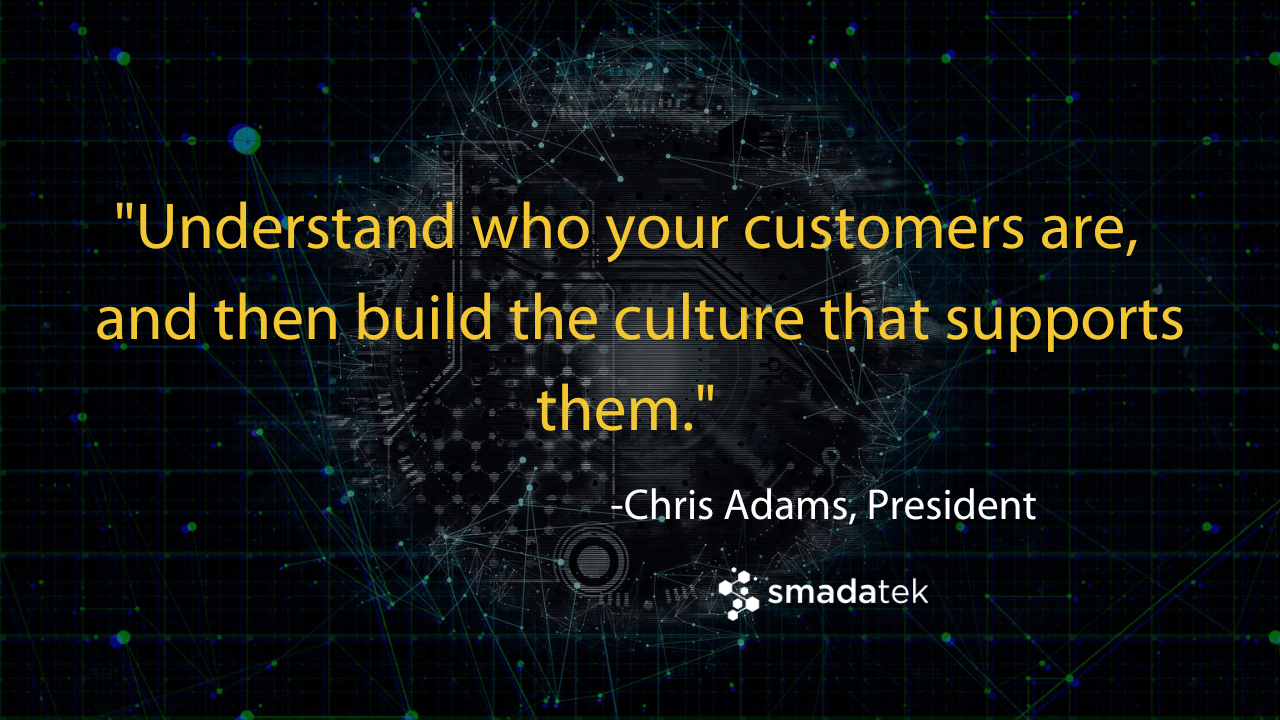Hello there! My name is Chris Adams, president of smadatek. In this quick video, I’m going to talk about: How do your customers experience customer service?
The main thing I want to talk about is customer service isn’t just a department or a phone number or an email. Customer service is the entire culture of your organization.
Let me share an experience that I had on Saturday at Starbucks to provide some context around this. My son had a lacrosse game on Saturday, and in between games, we decided to go to make a coffee run. Trey likes the Starbucks sandwiches. I head to Starbucks, I go to the counter, and I place my order. I place my order for a water and for a couple of coffees. Then, all on the same order, I place an order for a couple of sandwiches.
Now, here’s what’s interesting. The coffee and the water came out quickly, within five minutes, which was kind of standard. I would expect that. The rub that I had was, I had to wait 20 minutes for the food. As I’m waiting there, I started to grow impatient, because I’m trying to get back to the field. I have to park, Trey has to play, all this other stuff.
I think the lady at the front desk, being observant, which was great, noticed I was being a little bit frustrated. Here’s what she said to me. She said, “Sorry, sir, we just had a large rush of take-out orders; online orders for food that is sitting in front of you.” Immediately, to myself, I said, “Okay, well, that’s interesting.” I kind of peeked around to see what was going on. I saw one lady back there trying to get all of these orders out.
All Customers are not the Same
I said to myself, “What is going on here?” I will give you the premise, or my thoughts. Number one, I am a customer, and the take-out person is a customer too; but they’re not the same customer. I am a dine-in customer. Dine-in customers should be experiencing Starbucks differently than the take-out customers. Think about this. If you’re viewing those customers as the same, you are missing the mark, and you’re not delivering the customer experience that you need to be delivering.
If I’m a dine-in customer and I am being exposed to a bad experience because of another type of customer, you don’t have the right procedures, systems, policies, tools in place for them to be two different experiences. What’s happening is, I’m a dine-in customer that now is having a bad experience in lieu of the take-out customer. That’s what a lot of businesses are doing right now.

It doesn’t matter whether it’s a product; it doesn’t matter whether it’s a service. What we need to start understanding, and this is what we’ve done at Smadatek, is really starting to understand who our customers are.
The take-out customers need to have their own processes, their own tools. They have an app. The problem is, once it hits the organization to order that food: they’re using the same person; the same microwave; the same products; and the same things. That creates bottlenecks and that creates a bad experience for the people who are coming into the restaurant. How many times have we been to a restaurant, and we’ve had a bad experience in dine-in because of all the take-out orders? I’m not saying that take-out orders aren’t a problem. I’m just saying that if using the same staff, the same tool, the same principle, or the same processes, you will create bottlenecks and you will start creating bad experiences. There is a significant opportunity cost to your organization that you’re probably not even aware of.
Customized Processes Enhance Customer Experience
We just went down for super cross races in Salt Lake. We stayed at the Hilton. My experience at the Hilton is going to be different than my experience with another Hilton brand: like the Hampton Inn or the Garden Inn, which is another brand of Hilton. If I’m expecting the same, I’m really not serving my customers. That’s what it feels like at Starbucks. I’m not saying Starbucks was right or wrong. This was just my experience. I think it happens a lot in our organization. Customers are just not customers. We need to have different segments. How is this customer experiencing this?
Another interesting thing that I noticed the other night, was when I went to order take-out at Cafe Rio. What I noticed was, that when I got to the take-out window, they had a separate station for the take-out orders than they had for the dine-in customers. That’s really smart. They can’t have the food line gobbled up with all these other orders, because it takes away from the experience of the dine-in customers.
You have to provide a high level of experience for your customers.

You have to have a feedback loop. You have to understand, you have to be able to ask your customers and understand what’s going on. I think that’s really powerful.
How did we put this in play over here at Smadatek? For those of you who don’t know, we launched SmadaLABS, about 60 days ago. One of the things that was happening for us was, because we provide a really high level of customer service, we naturally had customers asking us if we could work on their personal PCs. The quick answer and the easy answer is, yes.
Here’s the problem: we could do the work technically, but we didn’t have the processes in place to actually do it at the level that we needed to do. So, we launched smadaLABS. smadaLABS is its own thing. It has its own ticketing system; an SMS feature so we can communicate; its own billing platform; its own P&L; its own website; the whole nine yards. It’s a separate brand that we are using to facilitate those computer sales and service. It’s working beautifully. We couldn’t bring in a computer and try to force it into our Smadatek processes. It just wasn’t going to work, but we knew that our customers were wanting it. We retooled it and that’s how we launched smadaLABS.
It’s the same thing that we did when we launched our S1, S2, and S3 brand. We understand that people need better computers. We’re building a better computer, and we’re putting the warranty behind the computer for five years.
Eric just ordered two independent moveable shelves, wire shelves, from Costco. They will house nothing but our S1, S2, and S3 computer parts. Those computer parts are not available to the bench for everyday repairs. It’s a separate system; a separate inventory specifically to support the S1, the S2, and S3 to deliver the mission that we have with our computers.
Here is another micro example that I think is really important. We have a lot of customers. We have customers that send us email, and we have customers that call us on the phone. One of the things that we know, is the fact that when people have a problem and they need it fixed immediately, the first thing that they’re going to do is pick up the phone and get someone on the horn. We are aware of that. We appreciate that. We welcome that.
We have a process to handle every single phone call that comes into our organization, because we know that when people call us, they want to get someone on the phone. We’re not pushing them to an auto attendant. We’re not pushing them to an IVR. We know that’s not what they want. That’s not the experience that they need to get their problem solved.
Now, is that different than someone who’s going send an email into us? Typically, someone who sends an email for a support problem, it’s not at the same level of urgency. We have our ticketing system that is put into place to manage those things. It’s the same customer with two different experiences coming from two different problems. We understand that and we’ve fixed it. That’s why we continue to build our culture around these processes.
Everyone is involved in customer service. Customer service just isn’t, who do I call when I have a problem? Customer service is all the interaction that we have when people hit our website, when people run into me on the street, when they run into James on the street, when they run to any of our team anywhere. That’s all part of the culture. It’s every single personal interaction. It’s every single phone call. It’s every single email. It’s the culture that we provide.
Ask Powerful Questions to Understand Customers
One of the things I think that we’re very aware of, and that we work on, is trying to understand how our customers are experiencing us. Our smadaLABS customers experience us differently than our smadatek customers. Our phone customers have a different experience and a different need than our email customers. We are aware of that, but we’re not willing to diminish our brand and our service to complete our vision, our mission. We use our core principles and our pillars to prop that up.
It’s really important for businesses and organizations to understand who their customers are. Ask the questions, how are they experiencing you? Reviews and testimonials are just one piece of it. Just yesterday, we had one of our CEOs of one of our largest customers in. Every quarter, we bring in our large customers and once a year we bring in our smaller customers. It’s not because they’re bigger or smaller, but because they, typically, are a little bit more dynamic and things are changing faster in the bigger organizations.
Steve came in yesterday and we brought in lunch. We sit down, and we ask questions trying to understand what’s going on. What worked last month? What didn’t work? What can we do to be better? What does your organization look like? We have this constant feedback loop. We’re not doing it on testimonies. We’re not doing it reviews. We’re not sending email surveys. We’re not doing that. We’re having real conversations. Those conversations create connections. That’s part of our feedback loop. In order to understand who your customers are, you have to have a feedback loop.

Put in the processes and the procedures and use the right tools and the right systems, to give them the experience that you want them to have that fulfills your vision and your mission.
Thank you! Chris Adams here, signing off.


0 comments